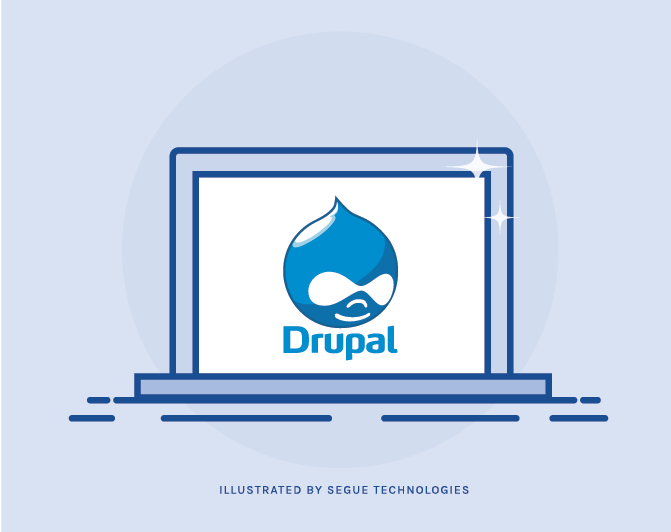Drupal is an open-source content management system (CMS). It’s more properly considered a CMS framework, as one of its greatest strengths lies in its extensibility. While Drupal does provide a wide range of capabilities in a default implementation, its API and module-driven architecture enable PHP developers to implement new functionality to serve their custom needs. In fact, there are a large number of “contrib” modules available for download from Drupal that can be quickly implemented to provide new features to a site. These modules are typically built around code that was developed to meet one developer’s need, and then expanded to be maintained by the collective open-source community.

One of Drupal’s most attractive characteristics is the fact that, as an open-source project, there is no acquisition cost for the software. It’s downloadable, for free, from Drupal.org, along with thousands of contrib modules. So, with the core features of Drupal providing the bulk of your site’s functionality, and a few well-chosen contrib modules delivering enhanced features, how much will it cost to build the Drupal site of your dreams? The answer, as with so many of these questions, is “it depends.”
Why the Cost of a Drupal Site is Dependent on Complexity
In a “best-case” (read: “cheapest”) scenario, there will be no custom development necessary. This means that the Drupal core (the key features included with a standard Drupal distribution) and readily available contrib modules can often-times address everything that the site needs to do. Of course, not all contrib modules are created equal, and sometimes there are several available that may deliver similar features. It is important, before picking out modules and heading toward site development, to establish a sound architecture for the site, and ensure that the chosen modules can all be used concurrently. It is also important to verify that the modules are available for the specific version of Drupal that you plan to use. If you need custom module development, you may want to integrate your site with your inventory system. Basically, you can expect for the cost estimate to mirror the complexity of the development the website entails.
Additional Design Elements
Once the basic feature set of the site is accounted for, a designer can begin to build wireframes and other mockups of the site to establish the look and feel. If you’ve got a logo and a preferred color scheme, you’re ahead of the game. If you’re starting from scratch, and don’t have any of these sorts of design assets going in, you can expect the design process to take a little longer (and cost a little more). During the design phase, you may also need to consider whether you want separate desktop and mobile versions of your site, or a single responsive site design that will automatically configure itself for the best display based on the device viewing it. Each of these decisions has cost implications in the short term, as well as future maintenance and upkeep implications in the long term.
The standard elements of the Software Development Life Cycle (SDLC) are still in-play: Requirement Definition and Testing/Quality Control are critical to ensuring that development is on-track and that the site meets your functional and business requirements.
Drupal Implementation
Implementation of a Drupal site, even if no custom development is required, is a process of properly defining templates and system components to support the prescribed information architecture. Greater complexity, again, results in higher costs. If you have many content types, and complicated workflows for content creation, the site will cost more than for a simple site with limited content types and workflows. Here, proper requirements definition and a good understanding of the CMS technology can ensure that your money is well-spent.
A standard Drupal project, with minimal custom development, may represent 6-8 weeks of work (or roughly $30,000 to $40,000), while a site with a large amount of custom development, complicated workflows, and a large number of content types may cost upward of $100,000. As a customer, the most effective way to get a reasonable understanding of the cost of the project is to do your homework before contacting a development company, and have a clear understanding of what your requirements are, and of where you stand in terms of readiness. Having clearly-defined requirements, available design assets, and a firm budget will allow you to ask the right questions, answer the developer’s questions, and make appropriate decisions about moving forward with your project.


